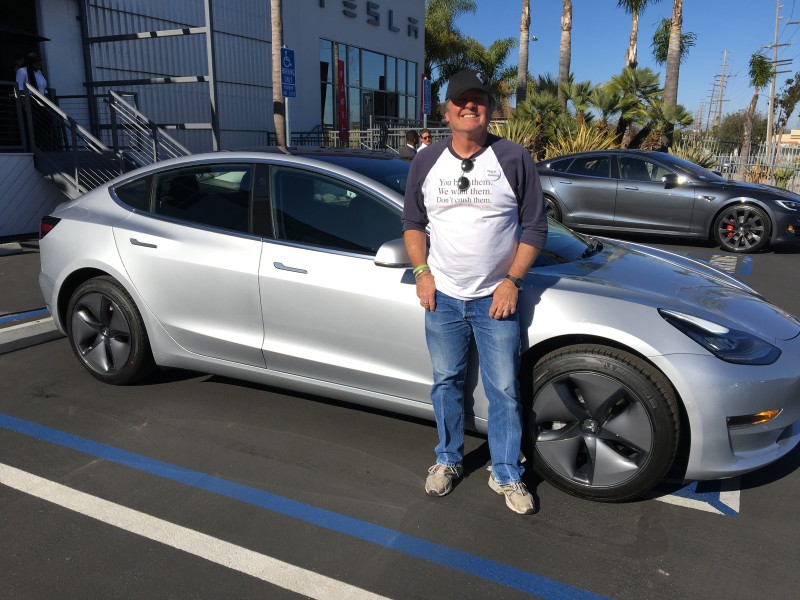It’s remarkable to consider how far the electric vehicle (EV) landscape has evolved. For those of us who remember the early days of EV advocacy, the journey has been significant. As someone with over 16 years of experience driving fully electric vehicles, and currently owning both a 2017 Chevy Bolt and a 2018 Tesla Model 3, I’ve been asked to provide a direct comparison.
Having driven my Chevy Bolt for 18 months and around 15,000 miles, including four 800-mile road trips, I’ve become intimately familiar with its strengths and weaknesses. My Tesla Model 3 is newer to me, with three months and a couple of thousand miles under its belt, and an upcoming 800-mile road trip on the horizon. While my Bolt consistently exceeds its estimated 238-mile range, even on long journeys, I’m still exploring the Tesla Model 3‘s advertised 310-mile range. The Bolt came in at around $46,000, while the Tesla Model 3 was closer to $60,000. Both are fantastic EVs, but cater to different priorities and preferences. While the Tesla Model 3 boasts a higher price and longer range, the Chevy Bolt offers its own set of advantages that some drivers might find appealing.
Driving Experience and Features
Chevy Bolt: Driver-Friendly Practicality
The Chevy Bolt immediately stands out as incredibly driver-friendly. Its comprehensive camera system, including front, rear, and a virtual overhead view, makes parking in the Bolt exceptionally easy – the simplest of any car I’ve ever driven. Adding to this ease of use are features like blind-spot warning lights. While it may not boast the autonomous capabilities of the Tesla Model 3, the Bolt prioritizes clear visual aids and intuitive controls for the driver.
 Side-by-side comparison of Chevy Bolt and Tesla Model 3 electric vehicles in a parking lot.
Side-by-side comparison of Chevy Bolt and Tesla Model 3 electric vehicles in a parking lot.
One feature I particularly appreciate in the Bolt is the regenerative braking paddle on the steering wheel. This paddle enhances the one-pedal driving experience, allowing for more aggressive regenerative braking on demand. Switching to the Tesla Model 3, I instinctively reach for this paddle, only to be reminded of its absence. Furthermore, the Bolt’s compatibility with “CarPlay” for audio and smartphone navigation provides a familiar and convenient interface, something that is more restricted in the Tesla Model 3. While the Bolt offers an internet hotspot service through OnStar, this feature is currently unavailable in the Tesla Model 3.
Tesla Model 3: Tech-Forward Performance
Stepping into the Tesla Model 3 is a different experience altogether. Its styling and performance are truly exceptional. For driving enthusiasts, the Tesla Model 3 is a joy. Setting it to “Sport Steering” mode unlocks thrilling acceleration and handling, delivering the sporty driving experience many crave. The minimalist interior design, while sleek, shifts almost all controls to the central touchscreen. While I appreciate the clean aesthetic, I do miss having physical buttons and gauges readily accessible and within my line of sight, especially for navigation details displayed in the upper-right corner of the screen.
However, the Tesla Model 3 compensates with a host of advanced features. Its autonomous parking capability and suite of self-driving tools highlight its technological edge. Features like driver-profile memory for seat, mirror, and steering wheel positions, along with a highly advanced climate control system, add to the premium feel. The panoramic glass roof and spacious interior further enhance the Tesla Model 3‘s appeal, creating a comfortable and modern driving environment. Both cars offer excellent audio systems, Bluetooth connectivity, and phone command functionality.
Range, Charging, and Road Trips
Chevy Bolt: Range and Charging Realities
My experience with the Chevy Bolt’s range has been positive, consistently exceeding the EPA estimate even on road trips. However, road tripping in the Bolt requires more planning around charging stops. While not insurmountable, the 90-minute charging stops needed for 400-mile journeys can add time to travel.
Tesla Model 3: Supercharger Advantage and Performance for Road Trips
The Tesla Model 3 is poised to excel as a road trip vehicle, primarily due to the Tesla Supercharger network. The promise of faster charging speeds and the extensive Supercharger network significantly reduces charging time and range anxiety. The longer estimated range of the Tesla Model 3, coupled with the Supercharger network, is a game-changer for EV road trips. The anticipation of quicker charging stops on my upcoming road trip in the Tesla Model 3 is high. Furthermore, the Tesla Model 3’s performance capabilities make highway driving, even with features like “hands-still-on-the-wheel” autonomous driving, an exciting prospect.
Price and Overall Value
Price Consideration and Value Proposition
The price difference between the Chevy Bolt and Tesla Model 3 is a significant factor. The Bolt offers a more accessible entry point into the EV market, delivering excellent practicality and driver-friendliness at a lower cost. The Tesla Model 3, while more expensive, justifies its price with superior performance, advanced technology, longer range, and access to the Supercharger network.
Conclusion
Choosing between the Chevy Bolt and Tesla Model 3 ultimately depends on individual needs and priorities. If budget and driver-friendly practicality are paramount, the Chevy Bolt is a compelling option. However, for those seeking cutting-edge technology, exhilarating performance, and a seamless road trip experience, the Tesla Model 3 is a clear leader. Having both, I appreciate the unique strengths of each and am confident that electric vehicles like the Chevy Bolt and Tesla Model 3 represent the future of driving.

